You have seen many tutorials about After Effects and now want to take a step further. One of the most powerful ways to express your creativity is by creating your own Custom effects. This ability gives you control over designing special effects according to your wishes, while fully utilizing the possibilities of After Effects. In this guide, you will learn how to create such an effect yourself.
Main insights
- You can implement your own ideas with Custom Effects.
- The use of controller elements such as dropdown menus and sliders makes customization easier.
- XML code is required to implement new Custom Effects in After Effects.
- A proper structure in the code is crucial for functionality.
Step-by-step guide
1. Create a composition and add a color solid
Start After Effects and create a new composition. Add a color solid that will serve as the base for your Custom Effect. This is a critical first step, as you will connect the control elements for your new effect to the color solid.
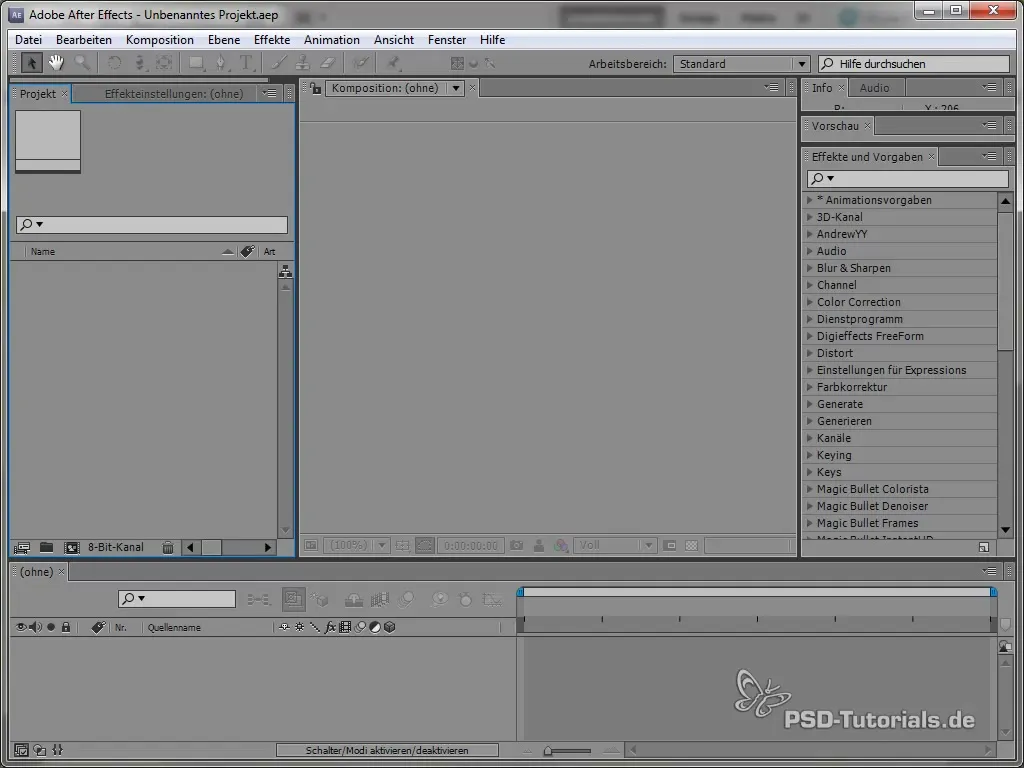
2. Choose and name the effect
Choose the effect you want to create from the menu. Look for a suitable name – for our example, we will use the name “Circulosity.” Make sure that the name is unique and only appears once in the project.
3. Edit the XML file
Navigate to the directory where After Effects is installed. There, you will find the “Preset Effects XML” file that you need to edit. This file contains all previous Custom Effects, and you will make your changes here. Open the file with a text editor, such as Notepad++.
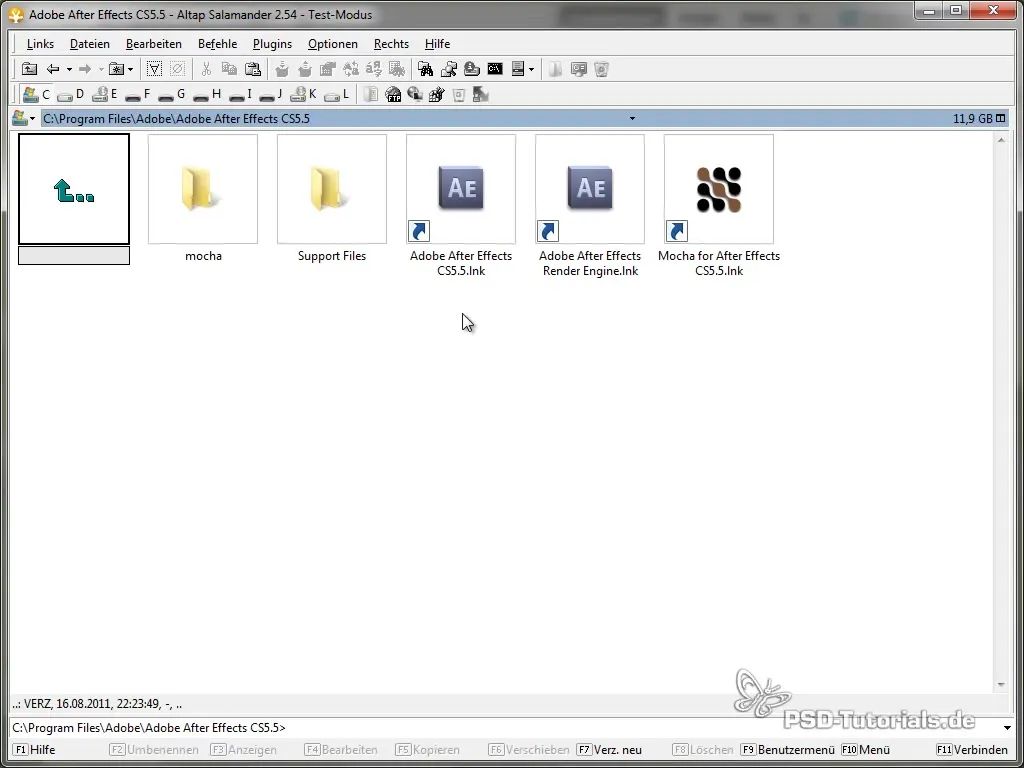
4. Create groups and controllers
Start by creating a new group for your effect in the XML file. Within this group, you can now add various controllers. These include point controllers, sliders, and checkboxes. This gives you the flexibility to adjust different parameters of your effect.
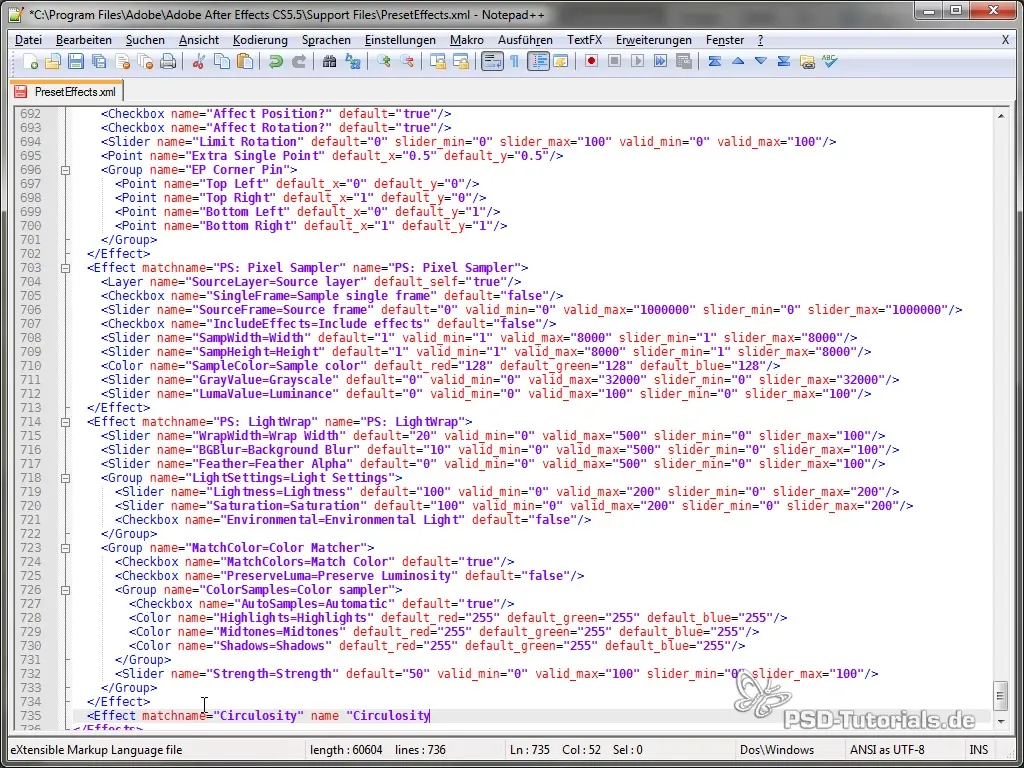
5. Add radius and position settings
As a further step, define the parameters for your effect. For example, you can add a slider for the radius and set the default value to control the radius of the circle. Make sure to also adjust the minimum and maximum values for sliders to avoid overstepping.
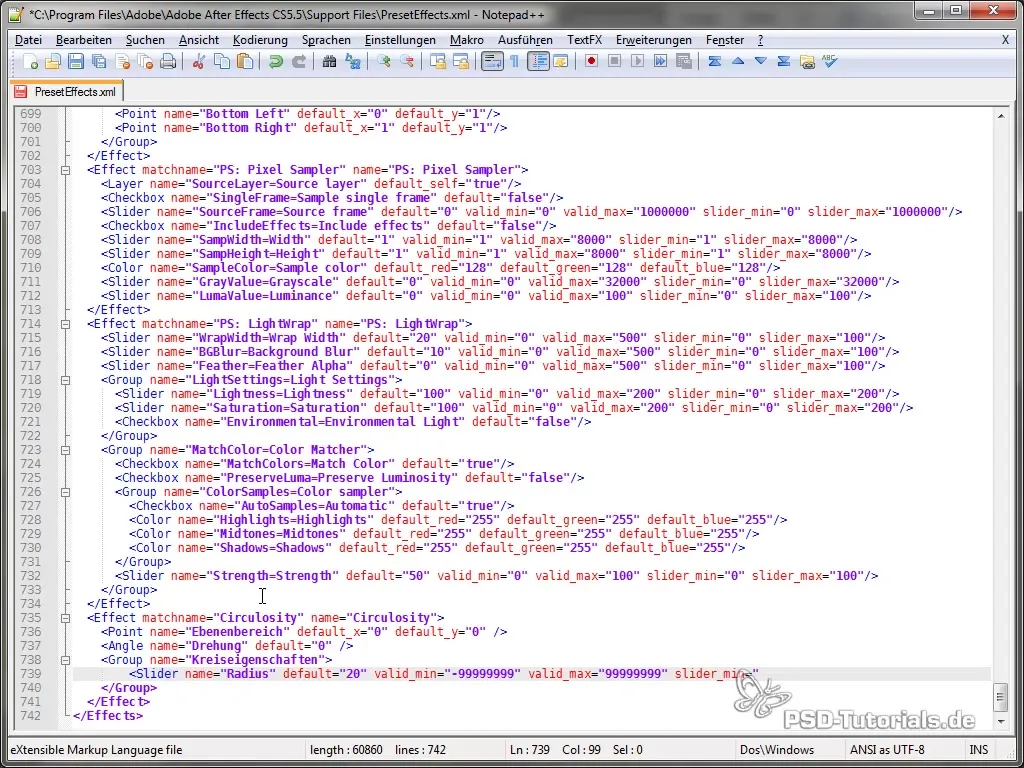
6. Integrate checkboxes and other parameters
Add checkboxes for various options in your Custom Effect, e.g., a checkbox for the ellipse effect. This allows users to control the shape according to their preferences. Remember to give each parameter a default value to achieve consistent results.
7. Add animation properties and wiggle
To make your effect more interesting, add animation properties that allow the effect to wiggle. This gives your effect dynamic movement and increases visual appeal.
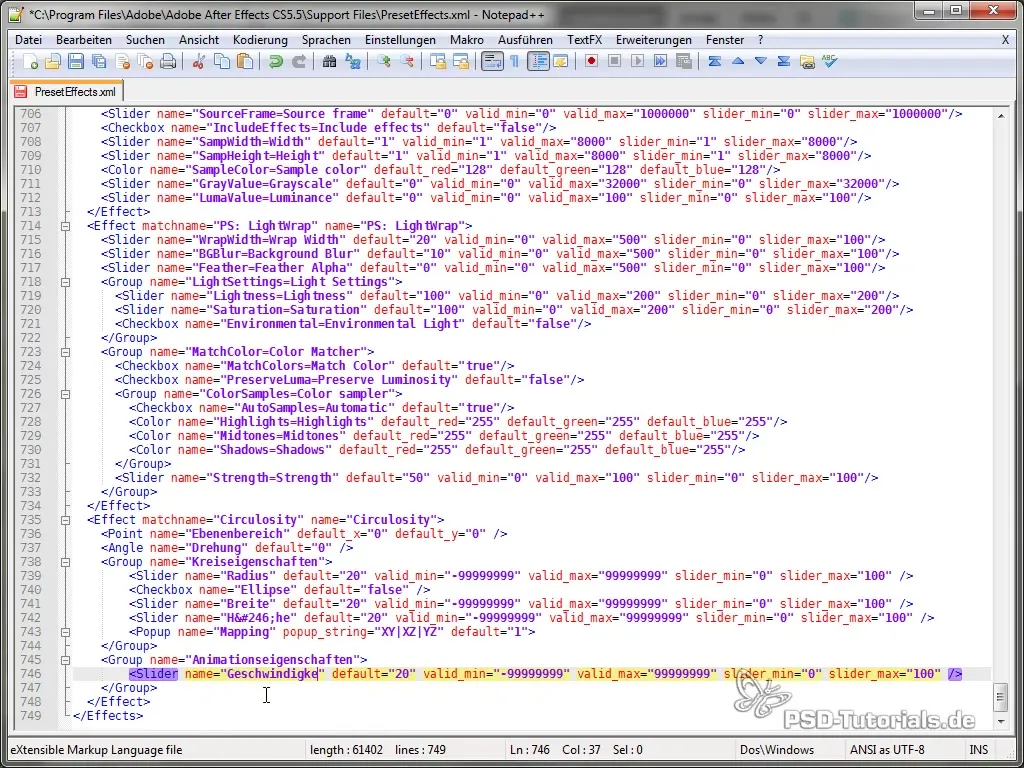
8. Create dropdown lists
Create dropdown lists to select different parameters of the animation properties. For example, you can choose whether the circle should be animated on the XY, XZ, or YZ plane. This adds even more customizability to your Custom Effect.
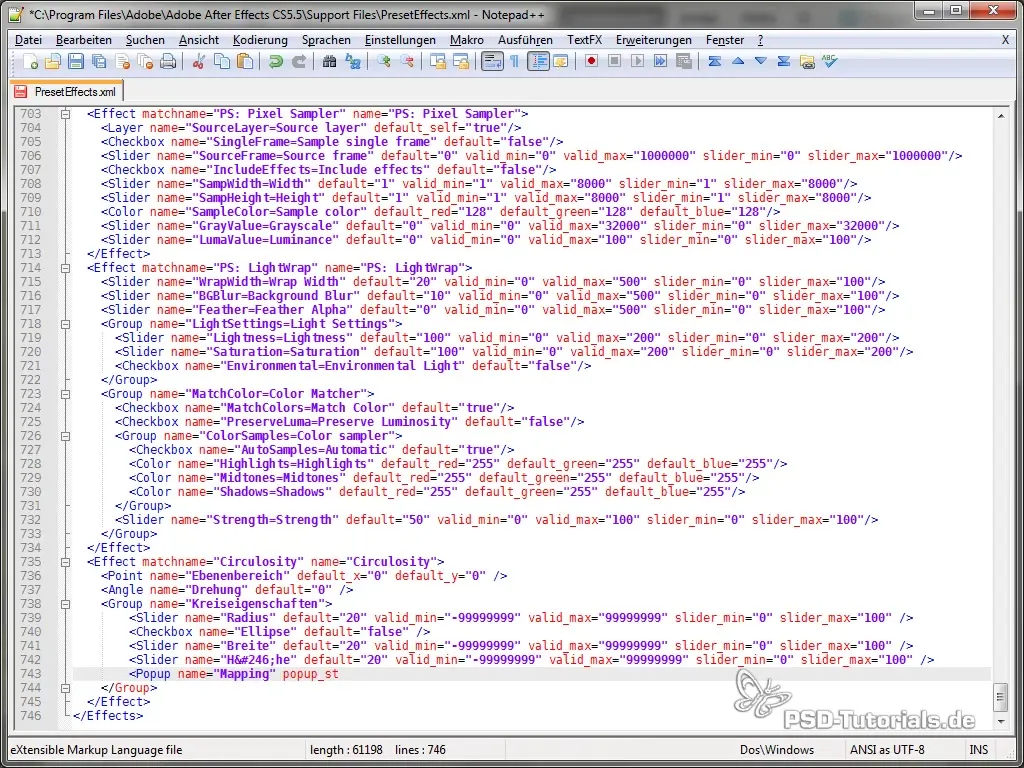
9. Save the effect and restart After Effects
Once you have made all the changes in the XML file, save the file and restart After Effects. This is necessary for After Effects to recognize the changes and make the new effect available in the program interface.
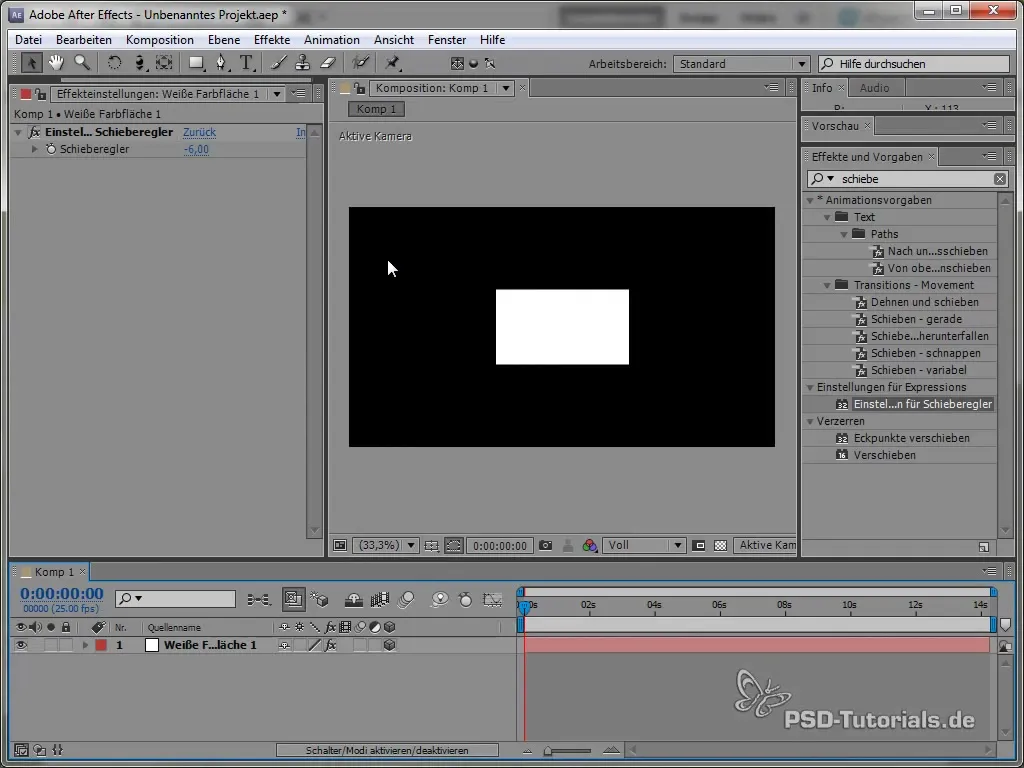
10. Script for applying the effect
To apply the new Custom Effect, you will need a short script. Open the Script Editor in After Effects and write a script that adds the new effect to the active layer using the “Add Property” command. After that, you should be able to select the Custom Effect from the corresponding list.
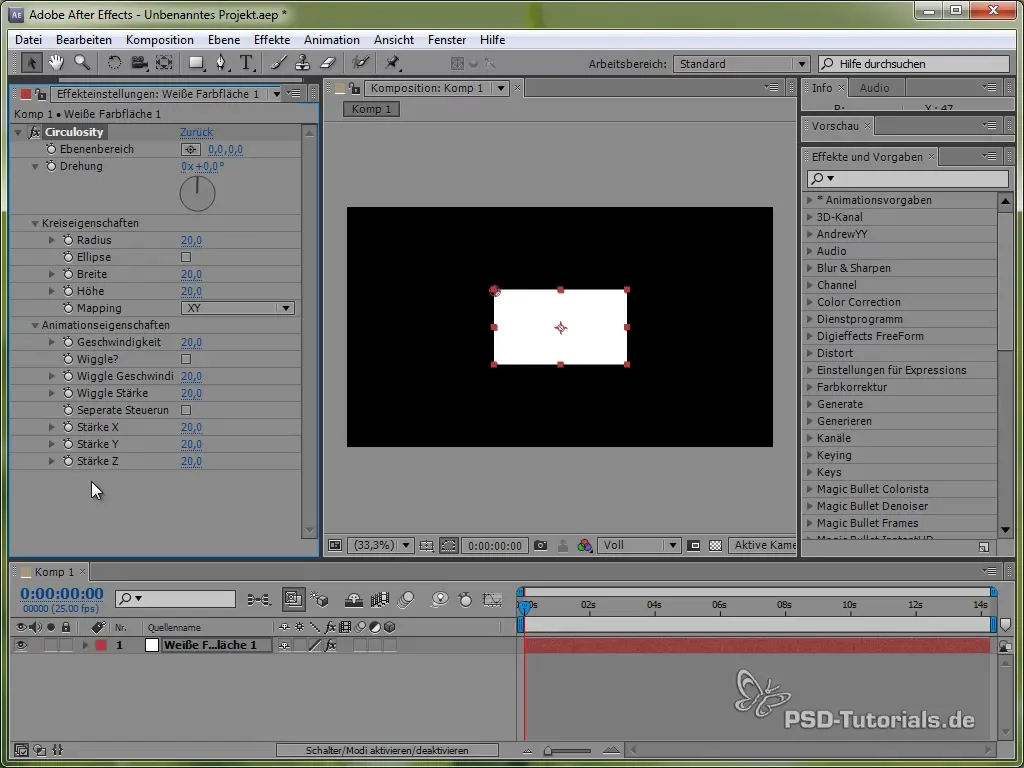
11. Test and adjust the effect
Test the new Custom Effect in your composition by interacting with the various controllers. Pay attention to how the effect adjusts in real-time. If something does not work as expected, go back to the XML file and adjust the necessary parameters or names.
Summary - Creation of your own Custom Effect in After Effects
By explaining these steps, you now have the fundamental knowledge for creating your own Custom Effect in After Effects. You know how to edit XML files, integrate parameters for user controls, and successfully apply the new effect.
Frequently Asked Questions
How do I create a Custom Effect in After Effects?Create an XML file with the desired settings, save it, and restart After Effects.
Can I have multiple controllers in a Custom Effect?Yes, you can integrate various controllers such as sliders, dropdowns, and checkboxes.
What do I do if the Custom Effect does not appear after restarting?Check the structure of the XML file and ensure that all groups are properly closed.


